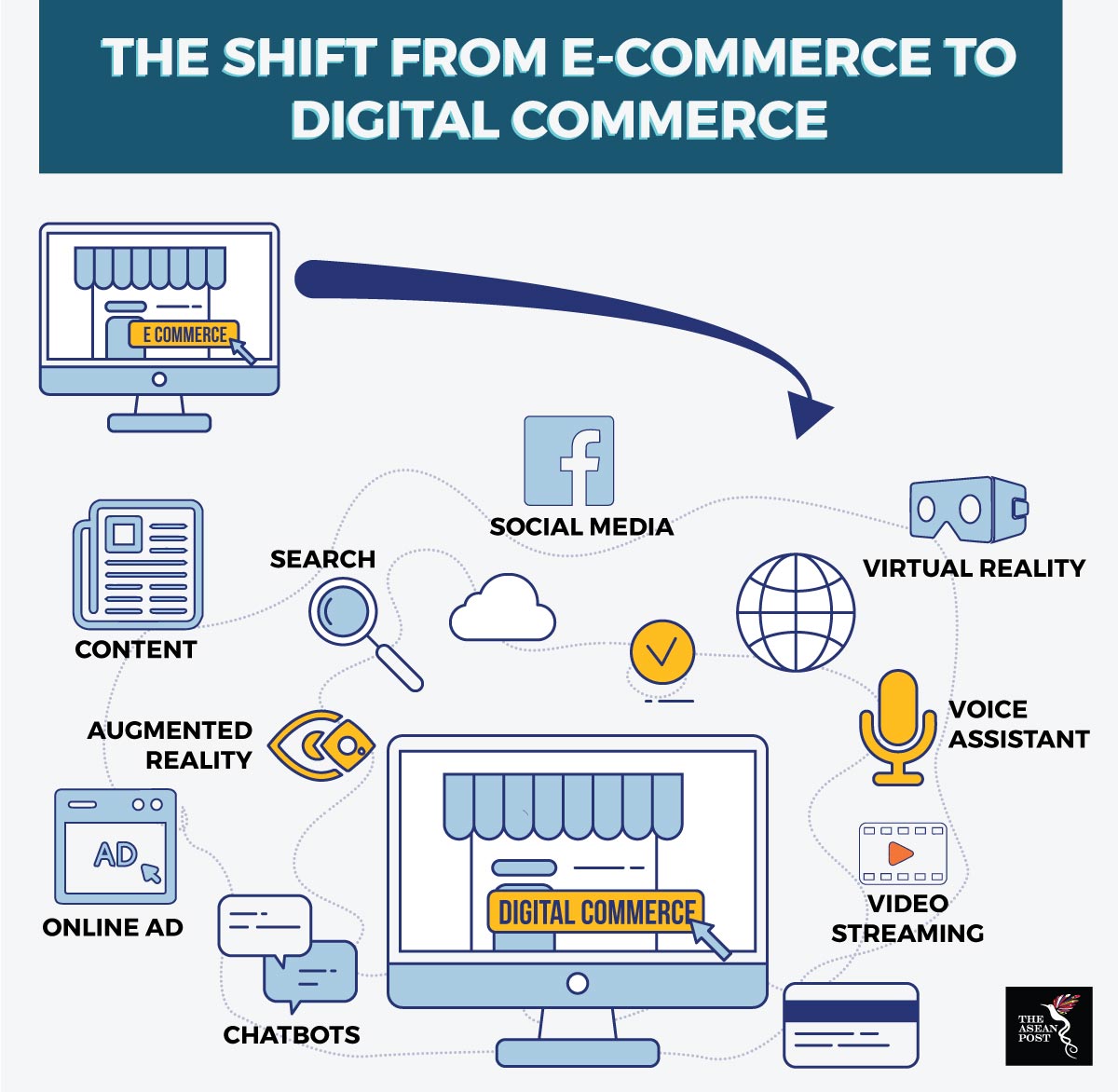Technology, since its genesis, has been changing the face of business especially in retail. There has been a shift of power from brands to consumers who now have more information and more options to work with when making a purchasing decision before buying online. By 2020, digital commerce in the ASEAN region is expected to grow exponentially to reach US$32 billion in the next 3 years, according to Accenture. But what is driving this exponential expansion of technology in the realm of commerce?
Demographics play a key role in driving this growth. 50% of ASEAN's population is under 30 years of age, and are coming into their prime spending years. High usage of mobile devices and the internet continues to grow, with 800 million mobile connections and 480 million internet users expected by 2020. Increasing wealth, supported by rapid GDP growth in excess of 5%, will see about 70 million households become new consumers, according to a 2017 report by Deloitte.
What’s behind the shift towards digital commerce?
Of course, every retail business relies on consumers. Whether its a traditional brick and mortar business or an e-store, the customer is the most pivotal player that either drives a business forward, or backwards.
As daily life in the region gets more and more fast-paced, consumers and customers want to minimise spending time on smaller activities such as shopping but instead, want to optimise fully the time that they have engaging in activities that they value most such as spending time with friends and families.
With the best and fastest technologies now right at their fingertips, consumers expect effortless customer experiences both, online and offline. According to Euromonitor, almost one in four online purchases in Asia are now made on smartphones and by 2020, 65% of all transactions will be carried out online.

Source: Accenture
There is also a current trend whereby online shoppers prefer to seek additional information by reading crowd-sourced reviews and comparing prices across apps and websites prior to making a purchase. The next phase of digital commerce will see less activities like these happening as it is expected that by 2020, e-commerce would have evolved.
The combination of technologies such as the Internet of Things (IoT) and artificial intelligence will allow consumers to gain additional information without the need of switching platforms or apps. Voice assisted devices will serve information predicatively and help complete purchases via seamless payment methods. Shopping will soon be fully integrated into current life moments, allowing consumers to fully utilise their time without having to worry about small details.
A 2018 study by Accenture has predicted that there will be a shift from traditional e-commerce to digital commerce - a combination of integrating omni-channel platforms, exploiting social media and new consumer-facing technologies, and providing actionable insights for effective integrated marketing.
“Simply featuring your products on an online platform and spending money on marketing is not enough to attract the evolving Asian consumer,” said Accenture Asia-Pacific Digital managing director, Mohammed Sirajuddeen.
How can Southeast Asian retail companies step up their game?
Southeast Asian entrepreneurs needs to take advantage of this boom and embrace the shift to digital commerce for a more holistic way of doing online business. Digital commerce will allow retailers to generate demand, control the supply chain, enhance the customer experience and provide sufficient data to analyse how to more effectively direct their marketing efforts in an integrated way.
Based on the current rate of technological developments, the region’s retailers have to play catch up with the needs of today's and tomorrow's consumers as that is what drives a market. This can be achieved through technology enablers such as data analytics, product and web content management systems, payments, order management and logistics planning to deliver the best customer experience to keep the evolving Southeast Asian customer coming back for more.
